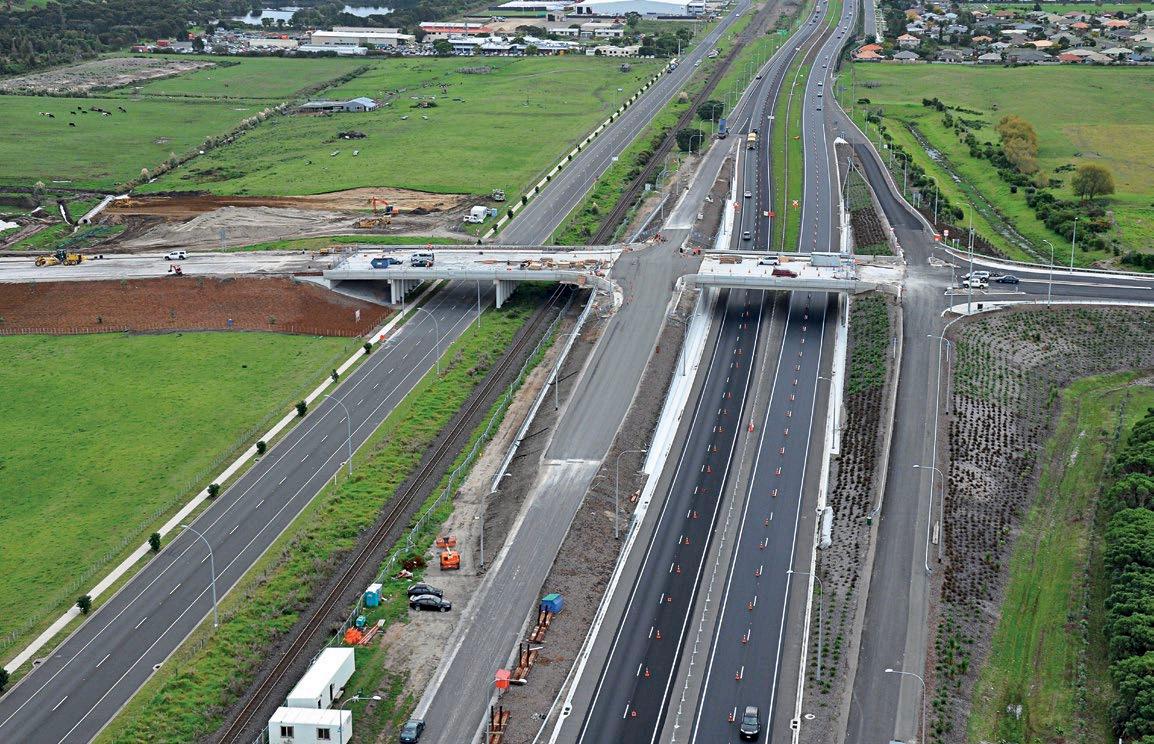
4 minute read
Fulton Hogan HEB Construction Alliance
Innovative approach to a build of national significance
Fulton Hogan HEB Construction Alliance first broke ground on the NZTA’s TEL project in November 2010. Two hundred and forty two weeks later the $335 million design and build project is done and dusted, four months ahead of schedule and considerably under the client’s initial budget.
Advertisement
4CONSTRUCTION EXCELLENCE AWARDS 2015 WINNER CATEGORY 4
PROJECT: Tauranga Eastern Link, Tauranga CONTRACTOR: Fulton Hogan HEB Construction Alliance (FHHCA) T EL is one of the New Zealand Transport Agency’s (NZTA) Roads of National Significance and the sheer scope of the work completed is daunting.
In its simplest expression, TEL involved building 21 kilometres of four lane median highway, a six kilometre upgrade of existing highway, 15 kilometres of tolled motorway, an electronic freeflow tolling system, eight bridges, and the installation of new interchanges, overbridges and underpasses.
Sound straightforward? Nothing on that scale ever is. For one thing the project was littered with challenges, including complex ground conditions, a build environment (which included significant amounts of high voltage power lines, major gas and water mains and variable substrata), and a destructive fire (which required part of the Domain Road Bridge to be deconstructed and rebuilt).
Fulton Hogan HEB Construction Alliance also had to deal with approximately 23,000 vehicles daily travelling through one major intersection.
The project’s statistics alone are impressive. For example, it required over three million metres of earthworks, approximately 550,000 square metres of new road to be laid and a design that incorporated some 300,000 plants.
Project director Andrew Johnson says the whole team had to be innovative in a number of ways. Looking back, he says what
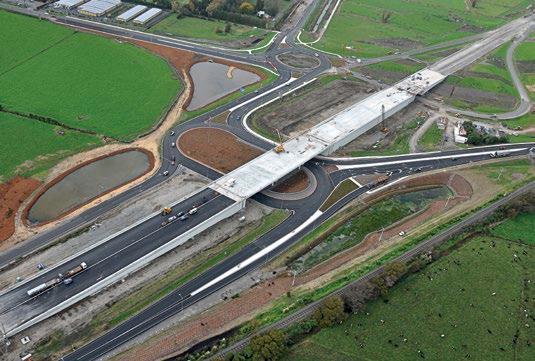
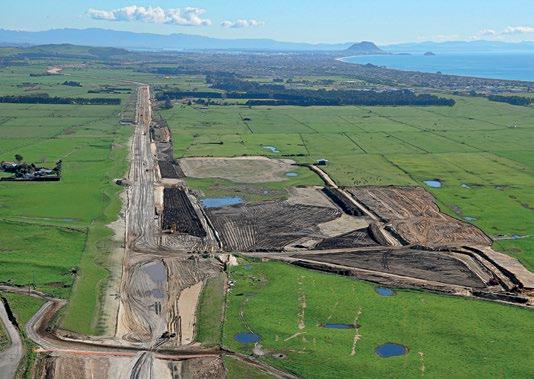
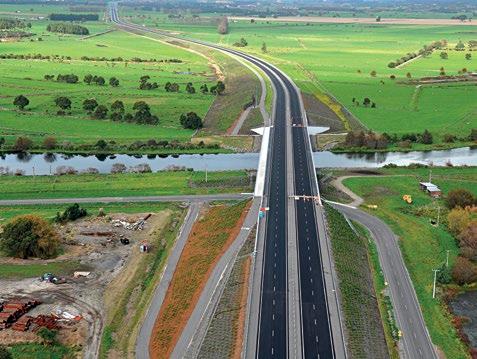
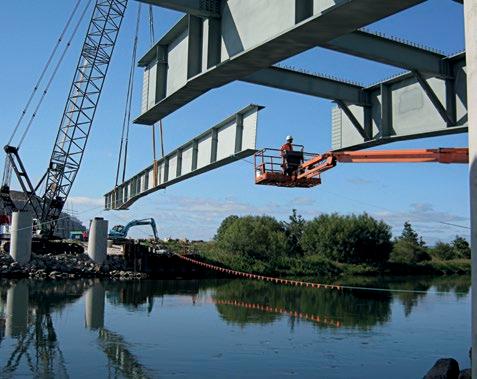
is particularly impressive is the way they approached pavement construction, filling sand bags, and using dairy waste as a dust suppressant.
“We varied our pavement design, depending on the ground conditions underneath,” he explains.
“[When we thought it was needed] a more flexible pavement using foamed bitumen was used in peat-based areas. In sand and tephra-based areas we used structural asphaltic concrete.
“When faced with the need to fill 40,000 sand bags with cement stabilised filling fines, the zone management team and work crew developed a bag filling frame capable of filling 40 bags at once, eliminating a huge amount of manual handling risk,”
Incidentally, the sand bag machine also won the NZ Workplace Health and Safety Awards in 2014 and reduced the wall construction programme by an estimated 50 days.
“Another idea we’re proud of is when the team developed an idea of using car-jacks to provide a simple, reliable and costeffective method of anchoring the extensometers between three metres and 10 metres into the ground. This allowed us to effectively monitor settlement.”
Not regularly talked about, FHHCA also took a novel approach to preventing dust, opting to use dairy waste as a dust suppressant.
“Equinox winds each year (during October / November) provided a challenge. We had to keep dust down on the 21-kilometre-long site. One of the ways we controlled this was by using dairy effluent from nearby dairy farms to spray over sand areas to stabilise them when not being worked on.”
To monitor this, the BOP Regional Council carried out environmental monitoring every month, with the project continually achieving a top rating.
“This way of stopping the dust reduced the total number of water carts required, resulting in project savings of over $55,000,” says Andrew.
FHHCA was also vigilant when it came to preserving the environment and culture. For example, it allowed archaeologists to work for three months at the Paengaroa site (after significant archaeological sites were identified), and had iwi monitors present on site whenever topsoil was stripped.
NZTA staffer and TEL senior project manager Wayne Troughton says TEL is a great success, largely because of FHHCA’s innovative approaches to the build and excellent stakeholder engagement activities.
“[For example] they used lightweight embankments for the Domain Road interchange and expanded polystyrene (EPS) instead of a more expensive bridging design. They also designed a monopitch cross fall in the areas where there were flooding issues with spill weir from neighbouring drains,” he says.
Both initiatives helped reduce costs and, more importantly, enabled resilience in the highway network. Not a bad review from a satisfied client. What’s more important is the fact that TEL is today a much safer, easier and quicker way to travel between Tauranga and Paengaroa.
It is reducing congestion on State Highway 2 and supporting regional growth.
As for FHHCA, the only remaining question is ‘what could possibly be next?’ l










